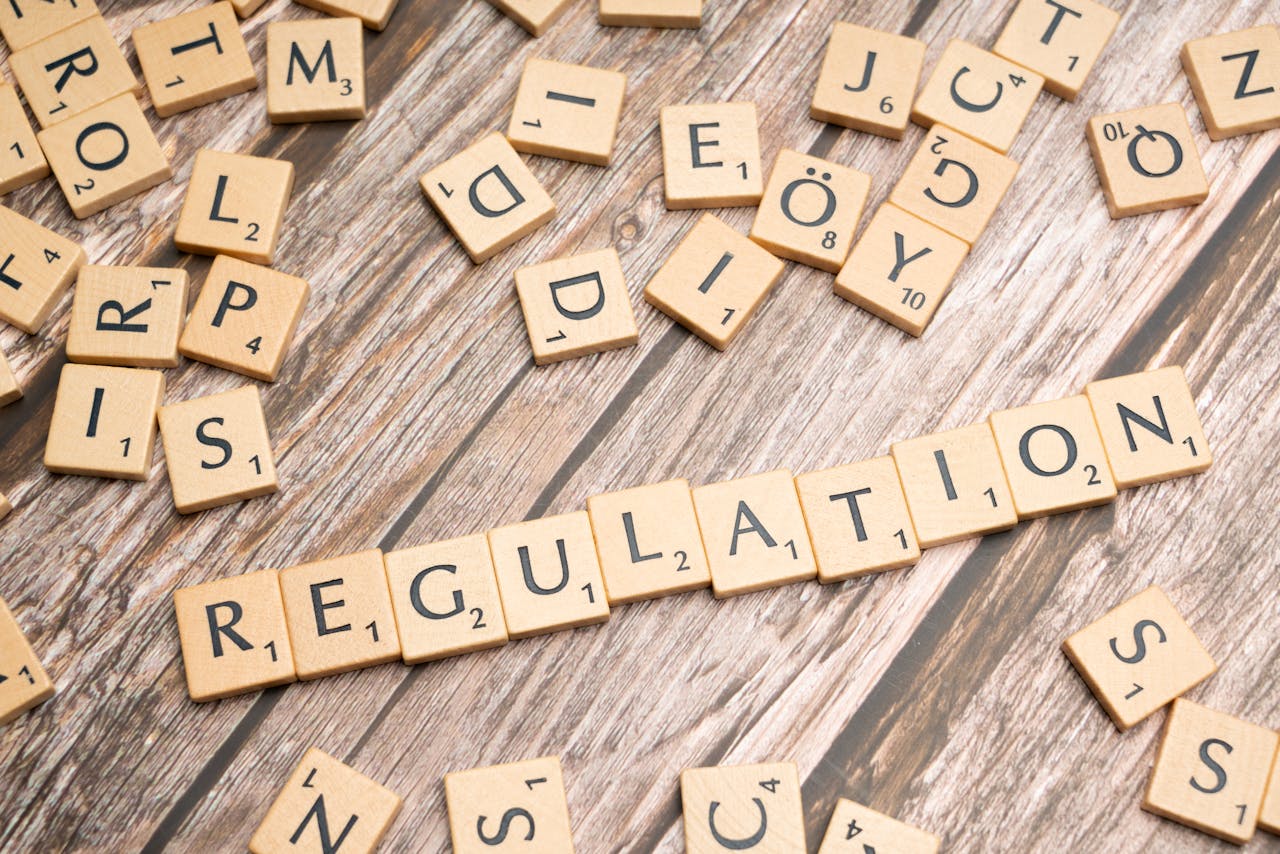Transitioning to blockchain technology brings about legal and regulatory challenges that require careful consideration. The existing laws were not originally designed to accommodate the unique decentralized nature of blockchain networks. This article will explore the key regulatory considerations in blockchain governance, including jurisdictional complexities, technology-neutral frameworks, governance and legal documentation, liability allocation, intellectual property considerations, and personal data privacy.
Key Takeaways:
- Blockchain governance involves addressing legal and regulatory challenges specific to decentralized networks.
- Jurisdictional complexities arise due to the cross-border nature of blockchain, requiring careful consideration of local laws and regulations.
- A technology-neutral regulatory framework is needed to effectively govern blockchain networks.
- Clear governance models and legal documentation are crucial for outlining interactions and mechanisms for implementing changes in the network.
- Risk and liability allocation, as well as intellectual property ownership, should be carefully assessed within each layer of network participation.
- Data privacy poses challenges in blockchain due to the immutability of data, requiring mechanisms to reconcile privacy regulations with the nature of blockchain.
Jurisdictional Considerations in Blockchain Governance
Blockchain technology’s inherent cross-border nature presents unique jurisdictional challenges that must be carefully navigated by participants in blockchain networks. The decentralized and distributed nature of blockchain means that activities occurring in each jurisdiction, as well as the role of participants, need to be considered to determine the applicability of local laws.
One significant aspect of jurisdictional considerations in blockchain governance is the extra-territorial effect of regulations. Even if blockchain users and nodes are located across the world, certain regulations, such as the European Union’s General Data Protection Regulation (GDPR) or tax laws, may have implications and apply to the network. This means that the governance of blockchain networks must carefully account for and comply with relevant regulations, regardless of the geographical location of network participants.
To illustrate the complexities of jurisdictional issues in blockchain, consider a cross-border blockchain network used for financial transactions. The participating nodes and users may be spread across multiple countries, each with their own legal framework for financial services. In this scenario, determining which jurisdiction’s laws apply, how conflicts between different legal systems are resolved, and how regulatory compliance is ensured, becomes critical for the effective and legitimate operation of the network.
Table: Comparison of Local Laws in Cross-Border Blockchain Networks
| Country | Financial Regulation | Privacy Regulation | Contract Law |
|---|---|---|---|
| Country A | Strict regulation for financial services | Data protection laws aligned with GDPR | Broad and enforceable contract laws |
| Country B | Relaxed regulation for financial services | Data protection laws with few specific provisions on blockchain | Contract laws with limited enforcement |
| Country C | Regulation focused on consumer protection | Data protection laws without explicit provisions for blockchain | Contract laws aligned with international standards |
In the above hypothetical example, a comparison of the relevant local laws across different countries in the cross-border blockchain network reveals the potential disparities and challenges faced by network participants. From stricter financial regulations to varying levels of privacy protection and contract enforceability, the jurisdictional considerations become crucial in designing an effective governance framework that addresses the legal requirements of all involved parties.
Overall, jurisdictional considerations in blockchain governance involve understanding the extra-territorial effect of regulations, ensuring compliance with local laws, and reconciling potential conflicts between different legal systems. By diligently navigating these challenges, blockchain networks can develop governance models that are legally compliant and foster trust among participants.
Technology-Neutral Regulatory Framework for Blockchain Governance
In order to effectively govern blockchain networks, it is essential to establish a technology-neutral regulatory framework that can accommodate the unique characteristics of this decentralized technology. Existing regulatory frameworks were not specifically designed for blockchain, making it challenging to determine how regulations should apply in this context. Therefore, a comprehensive and adaptable approach is necessary to address regulatory licensing, compliance regimes, and neutrality within the blockchain governance landscape.
The Regulatory Landscape
Blockchain governance operates within a complex regulatory landscape that requires careful consideration. As blockchain networks continue to evolve and disrupt traditional industries, regulators are faced with the task of adapting existing laws to encompass this novel technology. An effective regulatory framework must strike a balance between providing legal certainty and fostering innovation.
One key aspect of technology-neutral regulation is the development of licensing and compliance regimes that can accommodate the unique characteristics of blockchain networks. This includes the establishment of clear guidelines for licensing blockchain participants, such as network validators, miners, and node operators. By implementing these measures, regulators can ensure that participants are held accountable while still allowing for flexibility and innovation within the blockchain ecosystem.
Ensuring Neutrality in Blockchain Governance
Neutrality is a fundamental principle of effective governance in blockchain networks. It ensures that decisions are made in a fair and unbiased manner, without favoring any particular participant or group. To achieve this, regulatory frameworks must establish clear governance structures that promote transparency, accountability, and inclusivity.
Furthermore, the regulatory framework should provide mechanisms for dispute resolution and conflict management within blockchain networks. This includes defining the roles and responsibilities of governance bodies, establishing processes for decision-making, and ensuring that participants have access to appropriate mechanisms for recourse in case of disputes.
| Benefits of a Technology-Neutral Regulatory Framework | Challenges of Implementing a Technology-Neutral Regulatory Framework |
|---|---|
|
|
Implementing a technology-neutral regulatory framework for blockchain governance is crucial for fostering innovation, ensuring compliance, and promoting transparency. By addressing regulatory licensing, compliance regimes, and neutrality within the regulatory landscape, stakeholders can navigate the complex legal and regulatory challenges associated with blockchain technology.
Governance and Legal Documentation in Blockchain Networks
Establishing a clear and robust governance model is paramount for the effective functioning of blockchain networks. It outlines the interactions among participants and establishes the terms and conditions governing their involvement. With various stakeholders involved in a blockchain network, an agreed-upon governance framework ensures transparent decision-making processes and minimizes conflicts.
The network operator plays a crucial role in implementing and upholding the governance model. They are responsible for overseeing the day-to-day operations, facilitating communication, and maintaining the integrity of the blockchain platform. The network operator must act in the best interest of the participants and ensure equal representation and fair decision-making.
Legal documentation is vital in clarifying the roles, responsibilities, and rights of the participants and the network operator. It provides a formal record of the governance framework and helps prevent disputes by clearly outlining the mechanisms for implementing changes to the network, managing access, and addressing issues such as suspension or termination of participants. By having legal contracts in place, the expectations and obligations of all parties are clearly defined, ensuring a more secure and predictable environment for all stakeholders involved.
Governance Models in Blockchain
There are various governance models adopted by blockchain networks, each with its own characteristics and decision-making processes. Some networks rely on a centralized governance model, where a single entity or organization holds the decision-making power. Others operate on a decentralized model, where decisions are made collectively by the participants through voting or consensus mechanisms. Hybrid models, combining elements of centralization and decentralization, are also common. The choice of governance model depends on the nature of the blockchain network and the objectives of its participants.
In conclusion, governance and legal documentation play a crucial role in ensuring the smooth operation and effective management of blockchain networks. A clear governance model, supported by legally binding contracts, helps establish trust, transparency, and accountability among participants. By outlining the roles, responsibilities, and decision-making processes, blockchain networks can foster collaboration and innovation while minimizing conflicts and disputes.

Liability and Risk Allocation in Blockchain Governance
One of the key considerations in blockchain governance is the allocation of liability and risk. As blockchain introduces novel risks such as security vulnerabilities, regulatory compliance, and data protection challenges, it is crucial to establish clear mechanisms for addressing these risks within the network layers.
Risk allocation in blockchain governance involves assessing and mitigating potential risks associated with the technology. This includes identifying risks at different levels of the blockchain network, such as protocol layer, smart contract layer, and application layer. By clearly defining the responsibilities and liabilities of each participant within these layers, blockchain networks can effectively manage and minimize potential risks.
Furthermore, intellectual property (IP) ownership is another aspect of liability and risk allocation in blockchain governance. As blockchain allows for the creation and sharing of digital assets, it is important to establish clear guidelines for IP ownership and licensing arrangements. This not only protects the rights of creators and innovators but also promotes a collaborative and fair ecosystem.
Risk Allocation within Blockchain Network Layers
The allocation of liability and risk within different layers of a blockchain network is crucial for ensuring effective governance. Here is an overview of the risk allocation considerations at each layer:
- Protocol layer: This layer involves the underlying blockchain technology and its security vulnerabilities. Participants need to assess and address risks related to consensus mechanisms, network attacks, and code vulnerabilities.
- Smart contract layer: Smart contracts are self-executing contracts with the terms of the agreement written into code. Risk allocation in this layer includes addressing potential risks associated with coding errors, vulnerabilities, and loopholes that could lead to financial losses or breaches of contractual obligations.
- Application layer: This layer involves the development and operation of blockchain applications. Risk allocation here focuses on ensuring compliance with relevant regulations, data privacy protection, and the security of user data.
In conclusion, the allocation of liability and risk in blockchain governance is a complex task that requires careful consideration at each layer of the network. By addressing these considerations, blockchain networks can enhance their security, protect intellectual property rights, and foster a sustainable and trustworthy ecosystem.
Personal Data Privacy in Blockchain Governance
Blockchain technology offers numerous benefits, but it also presents challenges when it comes to personal data privacy. The immutability of blockchain, which ensures the integrity and transparency of transactions, conflicts with the principles of data protection regulation. Data protection regulations often require the ability to update or delete personal data, which is at odds with the permanent nature of blockchain records.
To address this challenge, mechanisms must be in place to reconcile the immutable nature of blockchain with data privacy requirements. One approach is to separate personal data from the blockchain itself and store it off-chain, in encrypted or hashed form. By keeping personal data off the public blockchain, privacy can be better protected while still benefiting from the transparency and efficiency of blockchain technology.
Another solution is the use of privacy-enhancing technologies such as zero-knowledge proofs or secure multi-party computation. These techniques allow for the verification of data without revealing its actual content, thereby reducing risks to personal data privacy. Implementing privacy-focused governance frameworks and protocols can also help ensure compliance with data protection regulations.
Impact of Blockchain on Personal Data Handling
The use of blockchain technology introduces new considerations for the handling of personal data. Traditional methods of data protection, such as centralized servers and access controls, may not be applicable in a decentralized blockchain network. The distributed nature of blockchain means that personal data may be stored across multiple nodes, potentially increasing the risk of unauthorized access or data breaches.
- The immutability of blockchain can also make it challenging to rectify inaccuracies or delete personal data when required by data protection regulations.
- Data anonymization techniques may be employed to mitigate privacy risks, but careful consideration must be given to ensure that anonymized data cannot be re-identified.
- It is essential for blockchain governance models to address these privacy challenges and establish safeguards for the handling of personal data within the network.
Summary
While blockchain technology offers significant potential, personal data privacy remains a critical concern. The immutability of blockchain and the need to comply with data protection regulations create a tension that must be addressed. By implementing privacy-focused mechanisms and governance frameworks, it is possible to strike a balance between the transparency and efficiency of blockchain and the protection of personal data.
Conclusion
Navigating the legal and regulatory landscape is crucial for successful blockchain governance. The decentralized nature of blockchain technology presents unique challenges that require careful consideration. Addressing issues such as jurisdictional complexities, the need for technology-neutral regulations, governance and legal documentation, liability allocation, intellectual property, and data privacy is essential for effective and compliant blockchain governance.
By understanding and addressing these regulatory considerations, blockchain networks can enhance their governance models and ensure legal compliance. Jurisdictional issues must be carefully evaluated to determine the applicability of local laws, even in cross-border blockchain networks. A technology-neutral regulatory framework that takes into account the specific characteristics of blockchain is necessary to foster innovation while maintaining legal compliance.
Proper governance and legal documentation are key to establishing clear terms and conditions for network participants. Robust governance frameworks and legal contracts can outline the interactions among participants and facilitate changes to the network when necessary. Risk and liability allocation within each layer of network participation should be carefully assessed and documented, including considerations for intellectual property ownership and licensing arrangements.
Furthermore, personal data privacy is a critical aspect of blockchain governance. Balancing the immutability of blockchain with data protection regulations is crucial. Mechanisms must be in place to reconcile the requirements of data privacy with the immutable nature of blockchain technology.
FAQ
What legal and regulatory challenges are associated with blockchain technology?
Transitioning to blockchain technology presents legal and regulatory challenges as existing laws were not designed with decentralized networks in mind. Common legal and regulatory issues include jurisdictional complexities, the need for technology-neutral regulations, governance and legal documentation, liability allocation, intellectual property considerations, personal data privacy, decentralized autonomous organizations (DAOs), and the legal status of smart contracts.
How do jurisdictional complexities affect blockchain governance?
Blockchain’s cross-border nature raises complex jurisdictional issues. Activities occurring in each jurisdiction and the role of participants must be carefully considered to determine applicability of local laws. Extra-territorial regulations, such as the European Union’s GDPR or tax laws, may apply even if blockchain users and nodes are located across the world.
Are existing regulatory frameworks suitable for blockchain technology?
Existing regulatory frameworks are not designed specifically for blockchain technology, making it challenging to determine how regulations should apply. Blockchain networks and their participants must be assessed to determine their position within the regulatory landscape. A technology-neutral regulatory regime is needed to accommodate the unique characteristics of blockchain governance.
What aspects of governance and legal documentation are important in blockchain networks?
A clear and robust governance model is essential for blockchain networks, outlining the interactions among participants and the applicable terms and conditions. Legal documentation should establish the mechanisms for implementing changes to the network and governing access, suspension, or termination of participants. Properly documenting the relationship between the network operator, participants, and the blockchain platform is crucial.
How should liability and risks be allocated in blockchain governance?
Blockchain introduces novel risks related to security, confidentiality, regulation, taxation, data protection, immutability, automation, and decentralization. Risk and liability allocation must be carefully assessed and documented within each layer of network participation. Intellectual property ownership and licensing arrangements should also be considered.
How does blockchain technology impact personal data privacy?
Blockchain’s immutability poses challenges for data privacy, especially when personal data is involved. Data protection regulations may require data to be updated or deleted, which conflicts with the immutability of blockchain. Mechanisms must be in place to reconcile blockchain’s immutability with data protection requirements.
What is the importance of legal compliance in blockchain governance?
Navigating the legal and regulatory landscape is crucial for successful blockchain governance. While challenges exist, addressing issues such as jurisdiction, technology-neutral regulations, governance and legal documentation, liability allocation, intellectual property, and data privacy can contribute to the development of effective and compliant blockchain governance models. Compliance with existing laws and regulations is essential for the long-term success and adoption of blockchain technology.
Source Links
- https://widgets.weforum.org/blockchain-toolkit/legal-and-regulatory-compliance/index.html
- https://www.lw.com/en/insights/blockchain-legal-and-regulatory-guidance
- https://www.frontiersin.org/articles/10.3389/fbloc.2019.00018
- Regulatory and Compliance: Pioneering the Future of Saudi Arabia’s Dedicated Cargo Airline - December 21, 2024
- Financial Strategies: Fueling the Growth of Saudi Arabia’s Dedicated Cargo Airline - December 20, 2024
- Operational Excellence: Ensuring Competitive Edge for Saudi Arabia’s Dedicated Cargo Airline - December 19, 2024






